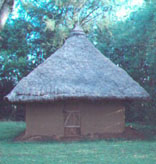12/15/2007


HOME
VILLAGE NEWS
GRANTS
ARCHIVES
;
![Dream Trips - - [lnk]](../../invest/highendbusiness-plaintext_asp.jpeg)
Uganda, 13/12/2007
NORWEGIAN FIRM PULLS OUT OF UGANDA’S NOT VIABLE HYDROELECRIC POWER PROJECT
By Leo Odera Omolo
Reports emerging from Kampala this week revealed that a Norwegian multinational hydropower developer and operator Sharkraft Norfund Power Invest As (SN Power) is pulling out of four Mimi-hydropower dam projects in Western Uganda.
Though the pullout is on the ground of the projects financial viability SN Power is selling its license to another Norwegian power firm.
SN power in December 2004 that it would make Uganda its entry point for generation of 43.5 megawatts of power in six districts in Western Uganda
The company said it decided to withdraw from the projects in August this year because they were deemed financially unviable, said Morte Lerberg SN power’s external relations manager.
“The Waki and Bugoya projects were developed to the point of investment decision, but SN power decided not to go further as they did not fit our corporate strategy and the commercial viability was not strong enough”.
SN Power gave up the Mazizi and Nengo Bridge license rights because we realized the project would not be commercially viable, said Mr Marte Lerbog Kopstad
Kopstad was quoted by the press last week as saying SN power had decided to sell its rights to Norwegian power company Troenderenegi. This will now mean that residents of Western Uganda will have to put up with irregular or no power supply longer than the 24-month construction period.
Troenderenergi is based in Trondhiem, Norway. It operates hydroelectric power plants and wind -farms as well as power grid in parts of Norway. The company is entirely owned by 20 municipalities in Norway though registered as a limited company.
Power generated from these sites was expected to supply the western district of Bundibugyo and Kanungu, which have no power and Kisoro, which gets its power from Rwanda .The other three districts are Masindi,Kabarole and Rukingiri, which are partly connected to the national grid but do not have adequate power supply.
Uganda’s energy Commissioner Paul Mubiri, however said in Kampala this week that the pullout does not spell doom for the Western districts as Troenderenergi is already preparing to continue.
The relatively small hydropower stations are expected to cost between USD 50 million and USD 60 million.
The Norwegian government, with some 100 years of experience in developing hydropower owns SN power. The company licensed in November 2004 by the Electricity Regulatory Authority (ERA) was expected to demonstrate its expertise on four sites in Western Uganda.
The sites are Muziz in Kaborale with a 20 MW capacity, Bugoye in Kasese with 11MW capacity, Nengo in Rukingiri with a capacity of 7.5MW and Waki in Masindi,a 5MW plant.
SN power first gave up the licenses for Muzizi and Wengo Bridge in early 2006, according to Mr. Kospstad,SN power made an agreement with Troenderenergi whereby the latter took over all the work that SN power had done on Bugoya . The final agreement was signed in July this year.
Troenderenergi is said to have completed the generation license application based on the negotiations SN power had started.
“SN power informed the government that we did not want to remain the exclusivity rights for Muziki and Nengo Bridge in spring 2006.
The license for Waki was given up in the fall of 2006 when it became apparent that the project was not commercially viable based on the NPC bids received in late 2006” said Kastad.
Despite and abundance of the natural resources necessary for power generators, including about 10 hydropower potential sites along the domestic energy needs .As a result, loadshedding is the order of the day.
Uganda’s power demand is growing at a rate of p% annually, against a zero percentage growth in supply, leaving a supply gap of 140MW.
About five percent of Uganda’s population has access to electricity and the 250MW Bujagali hydropower projects under construction and eight other mini- hydropower projects are expected to expand production to another 15 percent of the population and attract more industries to a country where domestic usage accounts for 70 percent of power consumption.
Falling water level in Lake Victoria and increasing demand have pushed Uganda into power crisis. In the face of this crisis, the government last year came up with measure such as the Energy for Rural Transformation (ERT) projects to mitigate the power shortage. The four projects that SN power was to develop and operate are part of the ERT initiatives.
Ends
leooderaomolo@yahoo.com
![High end travel; Low end rates; [Lnk]](../../invest/highendtravel-plaintext_asp.jpeg)
Joluo.com
Akelo nyar Kager, jaluo@jaluo.com
IDWARO TICH?
INJILI GOSPEL
ABILA